Green energy: NI's wind turbines generate controversy
- Published
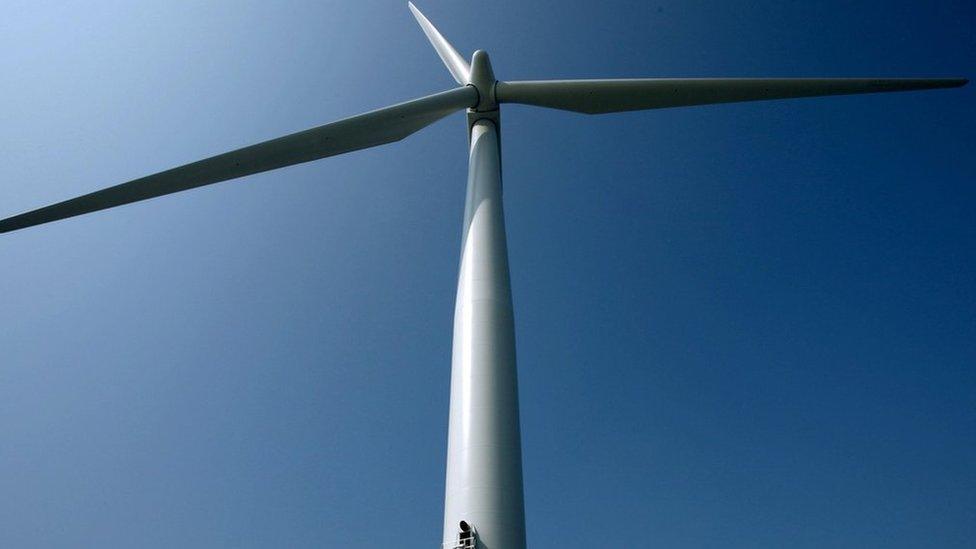
Fifteen years ago, hardly any of the electricity we use in Northern Ireland came from renewable sources like wind and solar power.
Polluting fossil fuels, many of them sourced from distant lands, were our staple.
But all that has changed.
In the year to March 2020, renewable sources provided almost 47% of our power, easily hitting the Northern Ireland Executive's target of 40% by 2020.
It is a remarkable achievement, good news for the environment and our energy security.
But the scheme that did much of the heavy lifting to get us there, the Northern Ireland Renewables Obligation (NIRO), is under ongoing scrutiny.
The focus has fallen particularly on single turbines. Those between 50kW and 250kW, the kind we have all grown more used to seeing, spinning in solitude in our verdant landscape.
Eight hundred of them have sprung up around us in the past 15 years.
Single turbines generate just 13% of our electricity from wind and yet get 40% of the subsidy for wind power.
Was this part of the scheme more costly than it needed to be? Was a 'green' scheme as friendly to our environment as it should have been?
How does it work?
The cost matters because we're all paying for it through our electricity bills.
The NIRO encouraged renewable energy generation through a financial incentive, a subsidy.
In return for the electricity they generate, owners of wind turbines are given what are known as Renewable Obligation Certificates (ROCs).
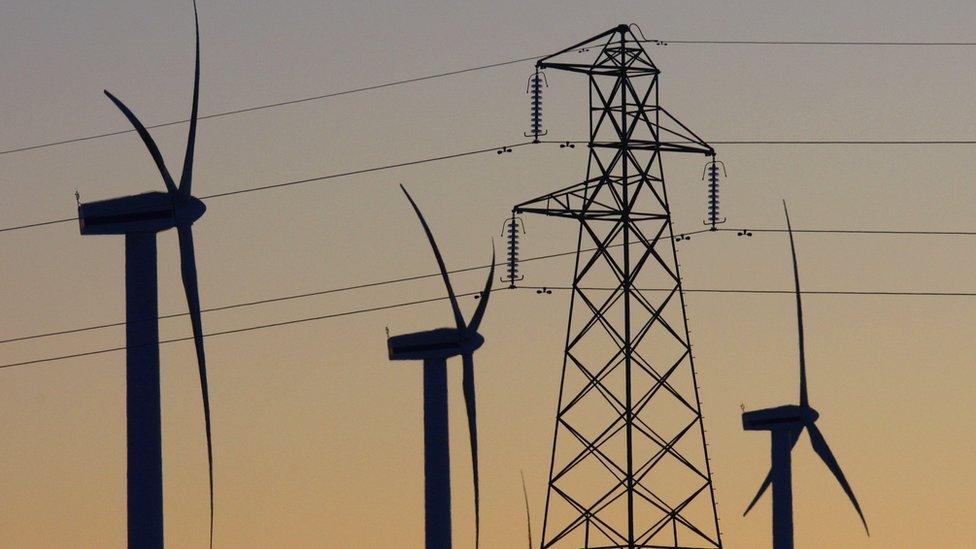
Energy companies pass cost of ROCs to customers
ROCs are as good as cash because big energy suppliers buy them, currently at a price of about £50 per ROC, to prove that some of the electricity they have supplied has come from renewable sources.
The big energy companies then pass the cost of all the ROCs on to us through our electricity bills.
Controversy over return
The number of ROCs paid to single turbine owners in Northern Ireland has become controversial.
The rate was set by Stormont's Department for Enterprise, now known as the Department for the Economy, when First Minister Arlene Foster was at its helm.
An Invest NI brochure from 2015, laying out all the financial benefits of investing in a single turbine, said a four-year payback period was possible.
And because the scheme lasts for 20 years from joining, that would mean 16 very good years for those investing.
A recent Audit Office report agreed that those putting up turbines could get their initial costs back in about four years, a return it said was more generous than necessary.
However, the Audit Office's calculations have been described as "deeply flawed" by a body representing turbine owners.
Renewable NI said the Audit Office, which stands over its conclusions, significantly underestimated the costs involved, including the cost of the turbine.
It also claimed the Audit Office based its calculation on a single turbine.
Renewable NI has commissioned its own report into the costs and benefits of turbines, which is due to be published before Christmas.

The SDLP's Sinead McLaughlin said no-one in business would design a scheme like this
Industry sources have told BBC NI's Spotlight programme that an eight-year payback period is more likely to be accurate.
SDLP economy spokesperson Sinead McLaughlin told Spotlight that even if the renewables industry is right about the costs, the subsidy is still substantial.
"If it was half, it still would be very, very generous" said Ms McLaughlin.
"I don't want to demonise the investors. If you provide a very lucrative scheme, you will be absolutely completely assured you get pick up from investors."
She added that no-one in business would design a scheme in the way the department had.
"A wily business person would see that as an over-incentive and a way to lose money quickly."
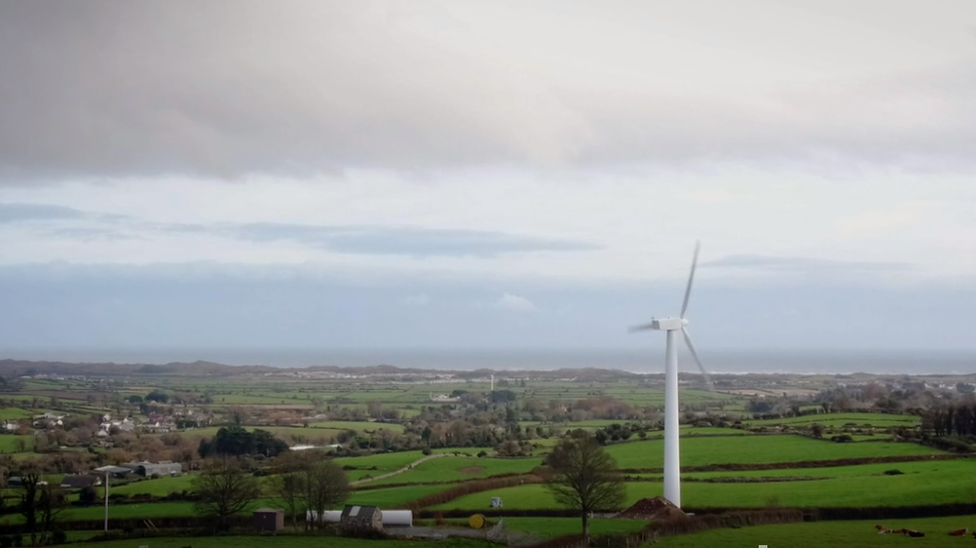
NI scheme compared
The Audit Office report said that after 2014, Northern Ireland's scheme became more generous than the equivalent scheme in the rest of the UK, but did not say by how much.
Spotlight's investigation revealed that by 2016, when the scheme closed, the NI scheme was four times more generous.
There are three times as many single turbines per square mile in Northern Ireland than in the rest of the UK.
The Department for the Economy told Spotlight the level of incentive was based on available evidence and had helped it hit its green target two years early.
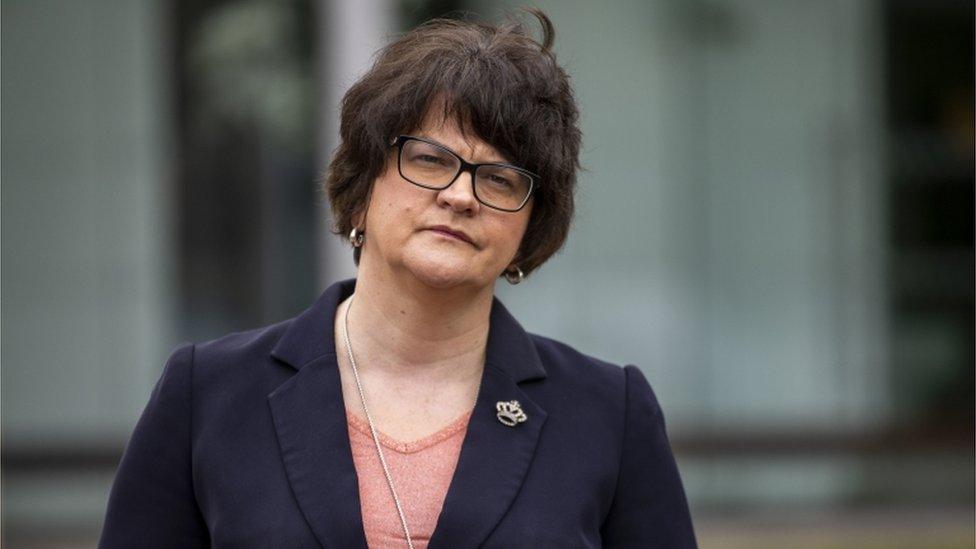
Arlene Foster said she was content her decision was based on evidence and advice from experts
It said our rate of payment was based on technology costs in Northern Ireland and it did not accept that it should have cut back just because Westminster did.
Mrs Foster told Spotlight she was content her decisions on the pay-out were based on evidence and advice from experts about technology costs.
Single turbines versus wind farms
The value of ROCs from single turbines was well illustrated in 2018.
A portfolio of 52 turbines, owned by a Northern Ireland-based business, was bought by the Royal Bank of Scotland pension fund.
The fund has added two more turbines since, including two big earners in north Antrim.
One, outside Dunloy, earned, by our estimation, about £260,000 in ROCs in the year to March 2020, easily outstripping the £95,000 cited as a typical income in the Audit Office report.
By contrast, a turbine of the same size in a wind farm would have earned about £60,000 for the same amount of power.
The Department for the Economy said that small-scale wind was not representative of the scheme nor of onshore wind generally.
Human impact
Another issue explored by Spotlight was how ROCs can still be paid even if the turbine does not have planning permission.
Damien Rice, from Castlewellan, told Spotlight that in 2013, without him receiving any prior notification, a turbine went up beside his house.
After the hum of the turbine caused sleepless nights for him and his family, Mr Rice quickly discovered it was in the wrong place. Nonetheless, it took six years to get it moved to where it had planning permission.
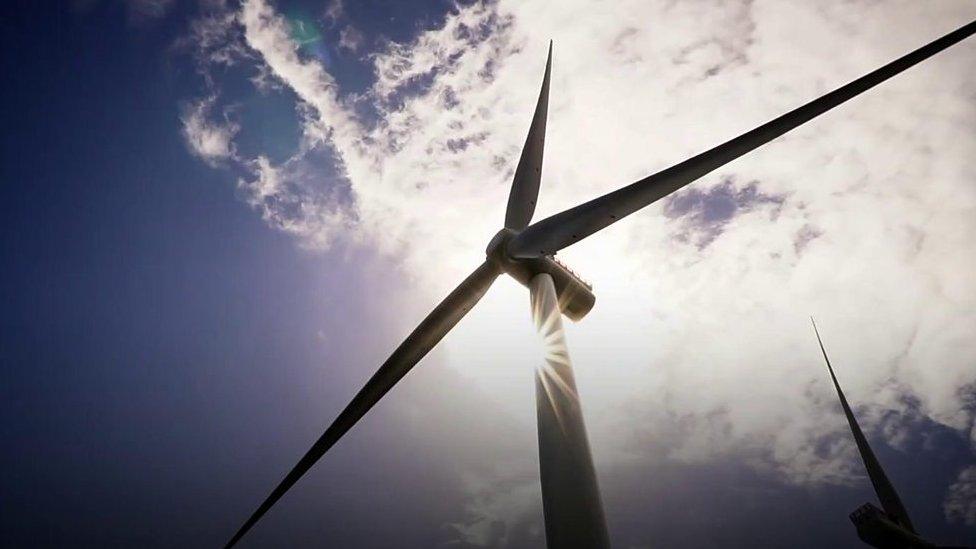
Mr Rice said he believed the turbine was put nearer to his home because it was higher and therefore windier, and "more wind means more money".
But being in breach of planning permission made no difference to the payment of ROCs.
In the six years the turbine was in the wrong place, it earned, by Spotlight's calculations, approximately £600,000 in ROCs.
Derated turbines
Perhaps the most striking aspect of the NIRO wind scheme is how it incentivises owners of bigger turbines to deliberately restrict their output to earn more money.
It's a lawful practice called derating - for example taking a 900kW turbine and restricting its output to 250kW to qualify for the most generous band.
Even with its output restricted, a derated turbine with bigger blades spins at the maximum capacity for longer than a 250kW turbine, earning more money.
Cloughmills businessmen Brian and Liam McGuckian have replaced two 250kW turbines with 900kW turbines which have been derated.
Their architects believed that their clients could double their income in ROCs by doing so.
In the year to March 2020, we calculate the business made almost £390,000 in ROCs from the new turbines.
Brian and Liam McGuckian said any public concern about the scheme was a matter for those in charge of it.

Economist Prof Gordon Hughes told Spotlight he believes a derated turbine could get its owners their initial costs back in just two years, with 18 years of income to meet ongoing costs.
The department told Spotlight Prof Hughes had shown no evidence he had the necessary information to make his calculations.
There is nothing in the scheme's rules - either here or in the equivalent scheme in GB to prevent derating.
However, the practice raises the prospect of the scheme being more generous than was intended by those who set it up.
Prof Hughes told Spotlight: "I'm sure they didn't envisage that it would happen in that kind of way. I'm sure they did the calculations looking at what were the standard 225kW turbines that were available on sale at the time.
"And that they didn't envisage the ways that people's behaviour may change. That's very common in economic policy."
The controversy over single turbines is not over.
Renewable NI has made a formal complaint to the Audit Office and its own accountants' report will undoubtedly contribute further fuel to the argument about costs and benefits.
Attention will then be focused on Stormont's Public Accounts Committee, which is due to hold a hearing on the Audit Office's findings in the new year.
Undoubtedly it will be the most eagerly awaited hearing of the PAC since its hearings four years ago into another green scheme - the now infamous Renewable Heat Incentive.
This Spotlight programme is now available to watch on the BBC iPlayer.
- Published30 November 2020

- Published9 December 2020
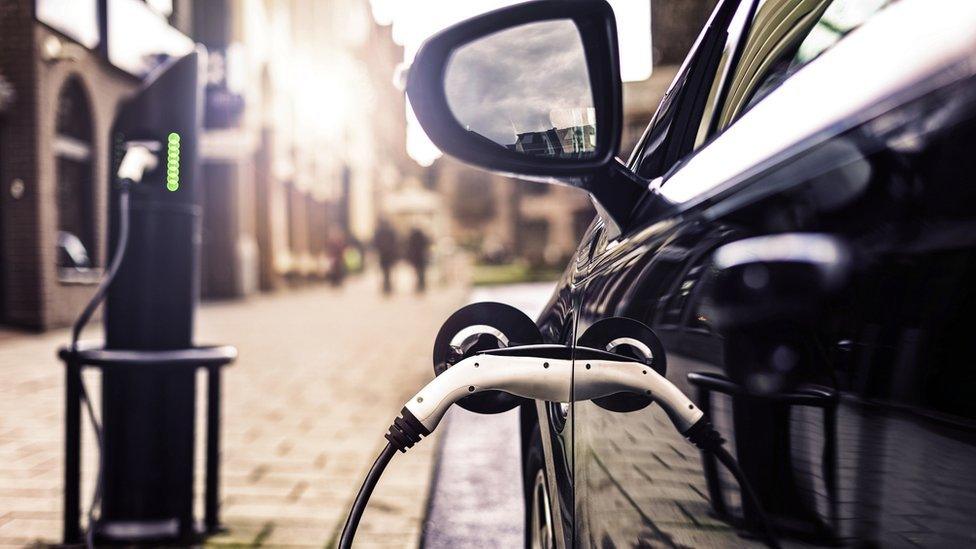
- Published13 October 2020
